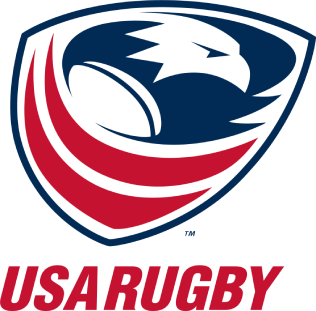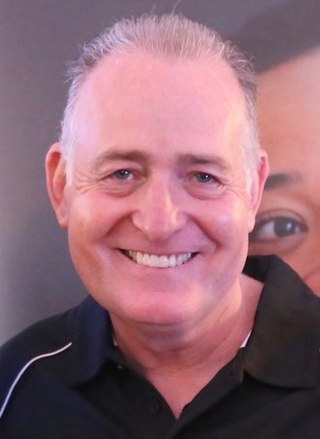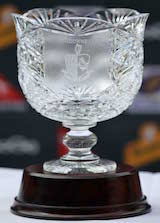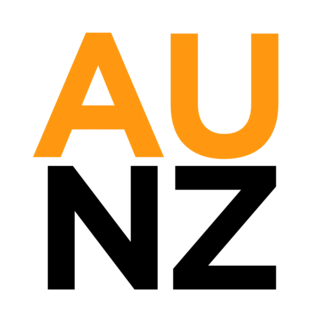
The United States men's national rugby union team, nicknamed the Eagles, represents the United States of America Rugby Football Union in men's international rugby union. USA Rugby is the national governing body for the sport of rugby union in the United States, and is a member of Rugby Americas North, one of six regional governing bodies under World Rugby. Until rugby returned to Olympic competition, with sevens at the 2016 Rio Games, the United States was the reigning Olympic rugby champion, having defeated the one other competitor in 1920 and the two other competitors at the 1924 Summer Olympics.

David Ian Campese, AM, also known as Campo, is a former Australian rugby union player (1982-1996), who was capped by the Wallabies 101 times, and played 85 Tests at wing and 16 at fullback.
In 1989, the British Lions toured Australia for the first time since 1971. Unlike previous tours to Australia, the Lions did not play any matches in New Zealand, this being the first Australia-only tour since 1899. The side was captained by Finlay Calder.
Nicholas Campbell Farr-Jones AM is a former Australian rugby union footballer. His position was scrum-half. Farr-Jones debuted for the Australia national rugby union team during the 1984 Australia rugby union tour of Britain and Ireland, during which the Australia won the grand slam of rugby union when they defeated all four Home Nations. He was voted "Player of the Series" for the 1986 Australia rugby union tour of New Zealand, during which Australia became the sixth team in history to win a rugby Test series in New Zealand. He was appointed captain of the Wallabies prior to the commencement of their 1988 international season. He is probably best remembered for captaining Australia to their the 1991 Rugby World Cup. Farr-Jones retired as captain of Australia after a victory against South Africa in 1992 and temporarily ceased playing international rugby. He came out of retirement in 1993 for the single Bledisloe Cup Test and a three-Test home series against South Africa, following which he retired from international rugby. He now works at Taurus Funds Management, appears as a TV rugby commentator on UK Sky Sports and is the chairman of the New South Wales Rugby Union.

Matthew James Giteau is an Australian rugby union professional player who plays for San Diego Legion of Major League Rugby (MLR).

Australian rules football in England is a team sport and spectator sport with a long history. It is home to the longest running Australian rules fixture outside Australia, the match between Oxford and Cambridge Universities which has been contested annually since 1923. The current competitions originated in 1989 and have grown to a number of local and regional leagues coordinated by AFL England. In 2018, these regional divisions were the AFL London, AFL Central & Northern England and Southern England AFL.

Australian rules football in the Australian Capital Territory has been played continuously since 1911 and was the most popular football code in the nation's capital Canberra between 1978 and 1982. The current governing body is AFL Canberra founded 1922, while the development body is AFL NSW/ACT established in 1999.
Michael Donald Haysman is an Australian born international cricket commentator. Prior to his broadcasting career, he is perhaps best known as a participant in the South African rebel tours.

The Lansdowne Cup is a rugby union trophy competed for by Australia and Ireland. Established in 1999, the cup was donated to the Australian Rugby Union by the Lansdowne Club of Sydney. The cup was launched in advance of the two Test matches played during the 1999 Ireland rugby union tour of Australia. The crystal trophy, made by Ireland's Waterford Crystal, for which the two nations compete was unveiled at a pub in Brisbane on 9 June 1999. Australia have won the Cup eight times while Ireland have won on six occasions.
Jack Newton OAM was an Australian professional golfer. Newton had early success in Australia, winning the 1972 Amoco Forbes Classic. He soon moved on to the British PGA where he won three times in the mid-1970s and finished runner-up at the 1975 Open Championship. Shortly thereafter, Newton started playing on the PGA Tour where he won the 1978 Buick-Goodwrench Open. During this era, Newton also played significantly in Australia where he won a number events including the 1979 Australian Open. Four years later, Newton had a near-fatal accident when he walked into the spinning propeller of an airplane, losing his right arm and right eye. However, he survived and managed to work a number of golf-related jobs the remainder of his life.
The 2009 end of year rugby internationals, also known as the Autumn internationals in the Northern Hemisphere, saw Australia, New Zealand, South Africa, and Argentina, tour the northern hemisphere.
The 2010 end-of-year rugby union tests, also known as the Autumn internationals in the northern hemisphere, saw Argentina, Australia, New Zealand and South Africa in a competitive tour of the northern hemisphere. Test matches were also arranged with the various Pacific island teams and other non-Tier 1 international sides. This period also marked the conclusion of the 2011 Rugby World Cup qualifying process, as well as the beginning of the European Nations Cup.
Since 1927, Australia and Ireland have competed against each other in rugby union in thirty-seven matches, Australia having won twenty-two, Ireland fourteen, with one draw. Their first meeting was on 12 November 1927, and was won 5–3 by Australia. Their most recent meeting took place at the Aviva Stadium, Dublin on 19 November 2022 and was won 13–10 by Ireland.
Australia and Fiji have played each other a total of twenty-three times, of which Australia has won the most with nineteen, including three at the Rugby World Cup's (RWC) of 2007, 2015 and 2019. Fiji won two of the first four matches between the two teams, however did not beat Australia again until 2023, at the 2023 Rugby World Cup.
The 1987 Korea rugby union tour of Australia was a series of five matches played by the Korea national rugby union team in Australia in 1987. The Korea team lost all five of their five matches, including the international match against the Australia national rugby union team.

Reece Hodge is an Australian professional rugby union player who plays in a variety of positions within the backline. Playing his junior career primarily at fly-half, Hodge's initial positions for the Rebels was fullback and wing, while for Australia it was wing, before eventually moving to centre. In his most recent appearance for Australia Hodge played at inside centre. Hodge plays for French club Bayonne in the Top 14 and the Australia national team. Starting his professional career with the Australian Super Rugby franchise, the Melbourne Rebels, by his departure in 2023, he reached 100 appearances for the team, and became the most capped player.
The 1967 Australia rugby union tour of New Zealand was the sixteenth Australian tour of New Zealand and the first since 1964. It was succeeded by the 1972 tour of New Zealand and Fiji, exactly five years. Unlike both teams' usual arrangement of playing a two- or three-match series, the 1967 tour was a one-off match, the first since Australia's 1931 tour and wouldn't be repeated again until New Zealand's 1979 tour of Australia.
The 1983 New Zealand rugby union tour of Australia was the All Blacks' seventeenth tour of Australia and their first one-off test tour since 1979. The tour was a one-off match between Australia and New Zealand at the Sydney Cricket Ground, Sydney. Considered the better side, and with the odds in their favour (6–4), New Zealand had only won five of their last ten fixtures against the Wallabies (50%). Australia were 9–10 outsiders, however, Wallabies coach Bob Dwyer commented: “The All Black aura of domination of five or six years ago is over... They were once supermen who couldn't be beaten but that All Black bogey doesn't exist any more.” New Zealand won the test 8–18. New Zealand coach Bryce Rope said that Australia and New Zealand were the two best rugby union teams in the world before the match. Wallaby coach, Bob Dwyer, insisted that Australia was the only team in the world that could beat New Zealand, saying several days before the match, "I honestly reckon we're about the only side in the world who can beat them." The match was also David Campese's fourth match against the All Blacks.

Anzac XV, often stylised as ANZAC XV, and often cited as Australia–New Zealand XV, is a combined rugby union team, consisting of players eligible to represent either Australia or New Zealand. The name "Anzac" comes from Australia and New Zealand's involvement in World War I. The Australian War Memorial states that "the formation in which Australian and New Zealand soldiers in Egypt were grouped before the landing on Gallipoli in April 1915." The team was initially supposed to be a "Barbarian-style" side combining many Wallabies and All Blacks. However many New Zealand-picked players dropped from the squad before the match against the Lions in 1989.
Philip Vivers Smith was an Australian rugby union international who represented Australia in eight Test matches. He also played rugby league for South Sydney.







